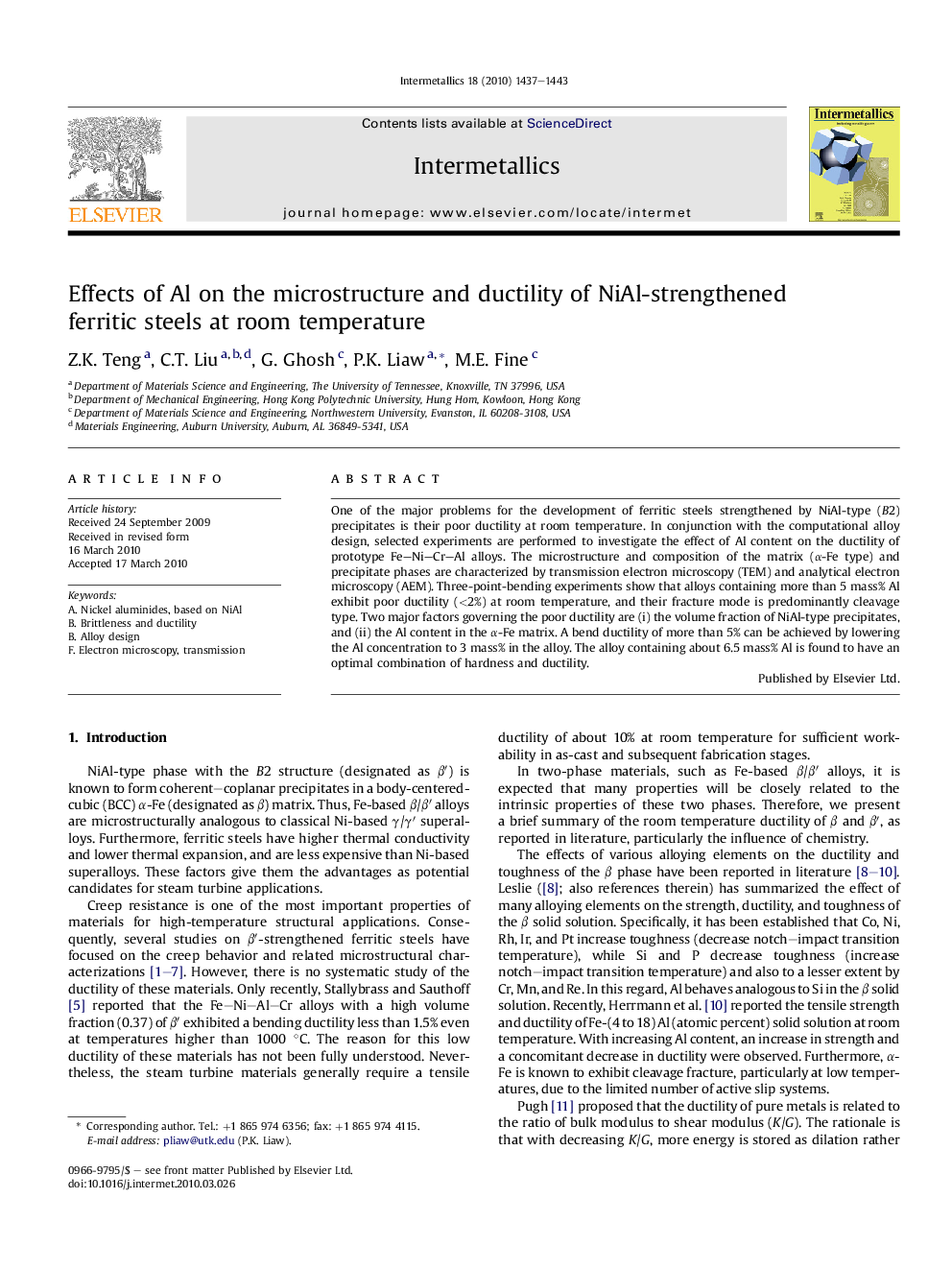| Article ID | Journal | Published Year | Pages | File Type |
|---|---|---|---|---|
| 1600803 | Intermetallics | 2010 | 7 Pages |
Abstract
One of the major problems for the development of ferritic steels strengthened by NiAl-type (B2) precipitates is their poor ductility at room temperature. In conjunction with the computational alloy design, selected experiments are performed to investigate the effect of Al content on the ductility of prototype Fe-Ni-Cr-Al alloys. The microstructure and composition of the matrix (α-Fe type) and precipitate phases are characterized by transmission electron microscopy (TEM) and analytical electron microscopy (AEM). Three-point-bending experiments show that alloys containing more than 5 mass% Al exhibit poor ductility (<2%) at room temperature, and their fracture mode is predominantly cleavage type. Two major factors governing the poor ductility are (i) the volume fraction of NiAl-type precipitates, and (ii) the Al content in the α-Fe matrix. A bend ductility of more than 5% can be achieved by lowering the Al concentration to 3 mass% in the alloy. The alloy containing about 6.5 mass% Al is found to have an optimal combination of hardness and ductility.
Keywords
Related Topics
Physical Sciences and Engineering
Materials Science
Metals and Alloys
Authors
Z.K. Teng, C.T. Liu, G. Ghosh, P.K. Liaw, M.E. Fine,
